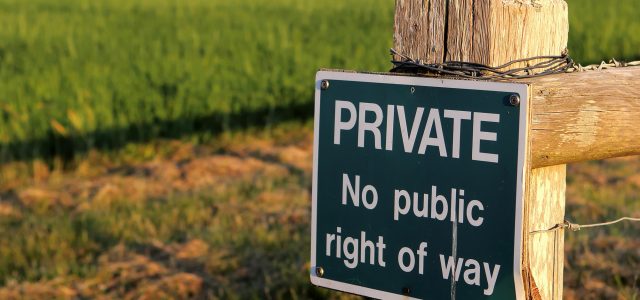
Public Rights Of Way
Over My Property – What Are My Duties?
It is not uncommon for properties, particularly those in rural areas, to have public rights of way over them, which can be found on Ordnance Survey maps and are revealed by local searches when purchasing properties, explains Graeme Booth, property solicitor at Farleys
The majority of public rights of way come into existence by way of presumed dedication ie long use by the public without interruption or objection. They can also be created by the Highway Authorities if they believe that a right of way over certain land would add to the public’s convenience and enjoyment, or by a landowner expressly dedicating a route across their property for the benefit of the public.
Public rights of way can take several forms:
• Footpaths – for walking, running, mobility scooters or powered wheelchairs
• Bridleways – for walking, horse riding, bicycles, mobility scooters or powered wheelchairs
• Restricted byways – for any transport without a motor and mobility scooters or powered wheelchairs
• Byways open to all traffic – for any kind of transport, including cars
When a public right of way crosses private property, whilst the Highways Agency is responsible for maintaining the surface, the property owner must not allow it to be obstructed. This can include:
• Stopping vegetation next to the right of way from overhanging or encroaching it in such a way as to cause an obstruction
• Providing and maintaining stiles and gates in a condition that is safe and convenient for public use
• Ensuring that the width of bridleways is at least 3m and footpaths at least 1.5m. When a right of way crosses a field, the widths reduce to 2m for a bridleway and 1m for footpaths
• If the property is farmland, observing guidance on keeping cattle in fields that have public access, as prescribed by the Health and Safety Executive eg bulls over the age of 10 months of particular breeds must not be kept in fields with public access. Landowners can be prosecuted for keeping any potentially dangerous animal on land crossed by a right of way
• Likewise, if a right of way crosses a field, keeping it free from crops or other cultivation.
If a property owner wishes to carry out works to their property that will impact upon a public right of way, they may need permission from the local authority and they must ensure that the right of way is reinstated and marked on the ground after the works have been carried out.
For advice on your duties as a property owner with regards to public rights of way over your property, contact Farleys’ property law experts on 01254 368040, email: info@farleys.com, or visit: farleys.com

